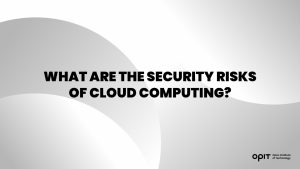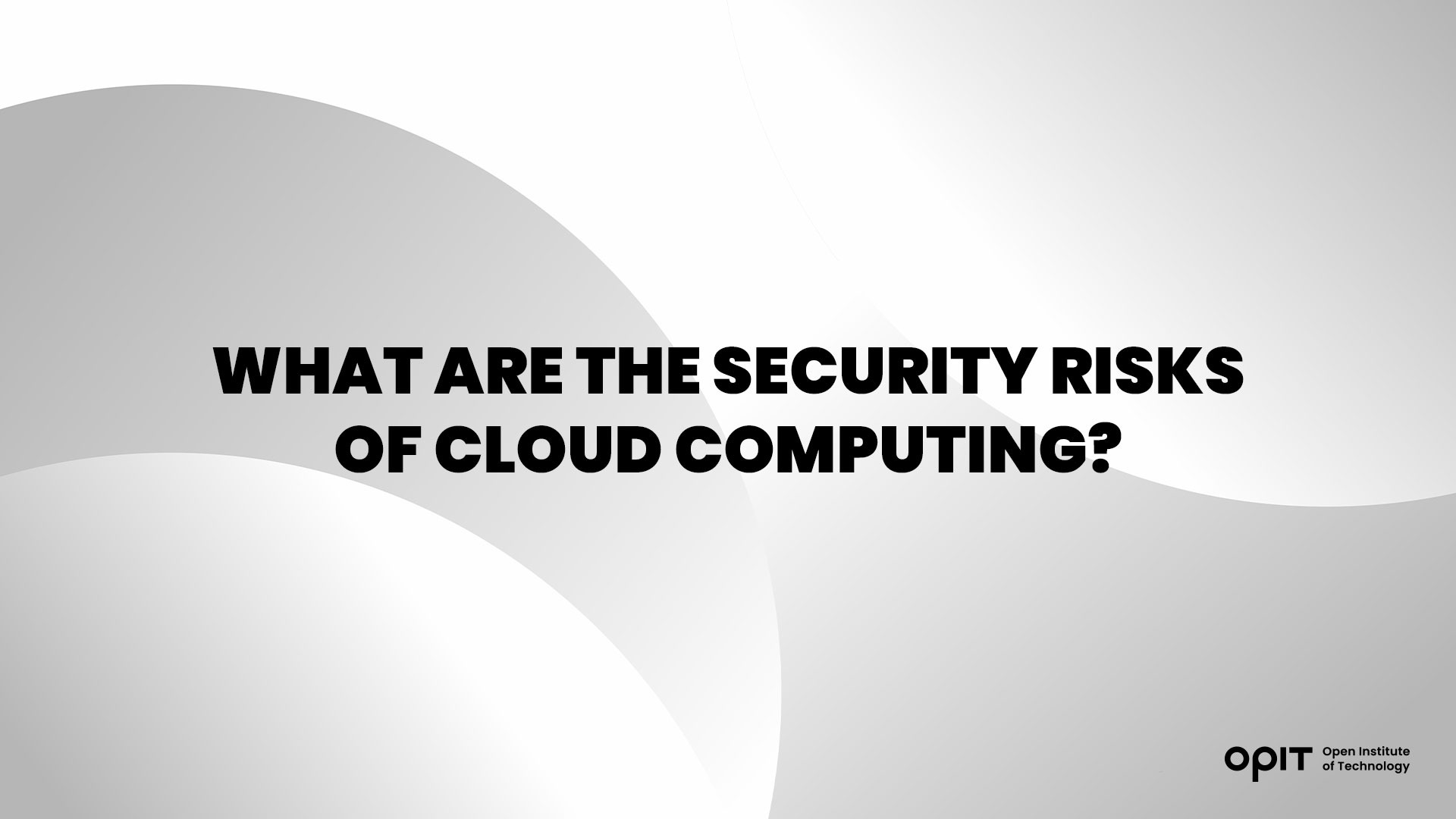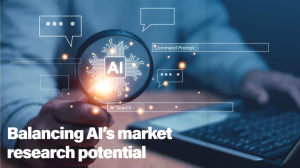

In today’s digital landscape, few businesses can go without relying on cloud computing to build a rock-solid IT infrastructure. Boosted efficiency, reduced expenses, and increased scalability are just some of the reasons behind its increasing popularity.
In case you aren’t familiar with the concept, cloud computing refers to running software and services on the internet using data stored on outside sources. So, instead of owning and maintaining their infrastructure locally and physically, businesses access cloud-based services as needed.
And what is found in the cloud? Well, any crucial business data that you can imagine. Customer information, business applications, data backups, and the list can go on.
Given this data’s sensitivity, cloud computing security is of utmost importance.
Unfortunately, cloud computing isn’t the only aspect that keeps evolving. So do the risks, issues, and challenges threatening its security.
Let’s review the most significant security issues in cloud computing and discuss how to address them adequately.
Understanding Cloud Computing Security Risks
Cloud computing security risks refer to potential vulnerabilities in the system that malicious actors can exploit for their own benefit. Understanding these risks is crucial to selecting the right cloud computing services for your business or deciding if cloud computing is even the way to go.
Data Breaches
A data breach happens when unauthorized individuals access, steal, or publish sensitive information (names, addresses, credit card information). Since these incidents usually occur without the organization’s knowledge, the attackers have ample time to do severe damage.
What do we mean by damage?
Well, in this case, damage can refer to various scenarios. Think everything from using the stolen data for financial fraud to sabotaging the company’s stock price. It all depends on the type of stolen data.
Whatever the case, companies rarely put data breaches behind them without a severely damaged reputation, significant financial loss, or extensive legal consequences.
Data Loss
The business world revolves around data. That’s why attackers target it. And why companies fight so hard to preserve it.
As the name implies, data loss occurs when a company can no longer access its previously stored information.
Sure, malicious attacks are often behind data loss. But this is only one of the causes of this unfortunate event.
The cloud service provider can also accidentally delete your vital data. Physical catastrophes (fires, floods, earthquakes, tornados, explosions) can also have this effect, as can data corruption, software failure, and many other mishaps.
Account Hijacking
Using (or reusing) weak passwords as part of cloud-based infrastructure is basically an open invitation for account hijacking.
Again, the name is pretty self-explanatory – a malicious actor gains complete control over your online accounts. From there, the hijacker can access sensitive data, perform unauthorized actions, and compromise other associated accounts.
Insecure APIs
In cloud computing, communication service providers (CSPs) offer their customers numerous Application Programming Interfaces (APIs). These easy-to-use interfaces allow customers to manage their cloud-based services. But besides being easy to use, some of these APIs can be equally easy to exploit. For this reason, cybercriminals often prey on insecure APIs as their access points for infiltrating the company’s cloud environment.
Denial of Service (DoS) Attacks
Denial of service (DoS) attacks have one goal – to render your network or server inaccessible. They do so by overwhelming them with traffic until they malfunction or crash.
It’s clear that these attacks can cause severe damage to any business. Now imagine what they can do to companies that rely on those online resources to store business-critical data.
Insider Threats
Not all employees will have your company’s best interest at heart, not to mention ex-employees. If these individuals abuse their authorized access, they can wreak havoc on your networks, systems, and data.
Insider threats are more challenging to spot than external attacks. After all, these individuals know your business inside out, positioning them to cause serious damage while staying undetected.
Advanced Persistent Threats (APTs)
With advanced persistent threats (APTs), it’s all about the long game. The intruder will infiltrate your company’s cloud environment and fly under the radar for quite some time. Of course, they’ll use this time to steal sensitive data from your business’s every corner.
Challenges in Cloud Computing Security
Security challenges in cloud computing refer to hurdles your company might hit while implementing cloud computing security.
Shared Responsibility Model
A shared responsibility model is precisely what it sounds like. The responsibility for maintaining security falls on several individuals or entities. In cloud computing, these parties include the CSP and your business (as the CSP’s consumer). Even the slightest misunderstanding concerning the division of these responsibilities can have catastrophic consequences for cloud computing security.
Compliance With Regulations and Standards
Organizations must store their sensitive data according to specific regulations and standards. Some are industry-specific, like HIPAA (Health Insurance Portability and Accountability Act) for guarding healthcare records. Others, like GDPR (General Data Protection Regulation), are more extensive. Achieving this compliance in cloud computing is more challenging since organizations typically don’t control all the layers of their infrastructure.
Data Privacy and Protection
Placing sensitive data in the cloud comes with significant exposure risks (as numerous data breaches in massive companies have demonstrated). Keeping this data private and protected is one of the biggest security challenges in cloud computing.
Lack of Visibility and Control
Once companies move their data to the cloud (located outside their corporate network), they lose some control over it. The same goes for their visibility into their network’s operations. Naturally, since companies can’t fully see or control their cloud-based resources, they sometimes fail to protect them successfully against attacks.
Vendor Lock-In and Interoperability
These security challenges in cloud computing arise when organizations want to move their assets from one CSP to another. This move is often deemed too expensive or complex, forcing the organization to stay put (vendor lock-in). Migrating data between providers can also cause different applications and systems to stop working together correctly, thus hindering their interoperability.
Security of Third-Party Services
Third-party services are often trouble, and cloud computing is no different. These services might have security vulnerabilities allowing unauthorized access to your cloud data and systems.
Issues in Cloud Computing Security
The following factors have proven as major security issues in cloud computing.
Insufficient Identity and Access Management
The larger your business, the harder it gets to establish clearly-defined roles and assign them specific permissions. However, Identity and Access Management (IAM) is vital in cloud computing. Without a comprehensive IAM strategy, a data breach is just waiting to happen.
Inadequate Encryption and Key Management
Encryption is undoubtedly one of the most effective measures for data protection. But only if it’s implemented properly. Using weak keys or failing to rotate, store, and protect them adequately is a one-way ticket to system vulnerabilities.
So, without solid encryption and coherent key management strategies, your cloud computing security can be compromised in no time.
Vulnerabilities in Virtualization Technology
Virtualization (running multiple virtual computers on the hardware elements of a single physical computer) is becoming increasingly popular. Consider the level of flexibility it allows (and at what cost!), and you’ll understand why.
However, like any other technology, virtualization is prone to vulnerabilities. And, as we’ve already established, system vulnerabilities and cloud computing security can’t go hand in hand.
Limited Incident Response Capabilities
Promptly responding to a cloud computing security incident is crucial to minimizing its potential impact on your business. Without a proper incident report strategy, attackers can run rampant within your cloud environment.
Security Concerns in Multi-Tenancy Environments
In a multi-tenancy environment, multiple accounts share the same cloud infrastructure. This means that an attack on one of those accounts (or tenants) can compromise the cloud computing security for all the rest. Keep in mind that this only applies if the CSP doesn’t properly separate the tenants.
Addressing Key Concerns in Cloud Computing Security
Before moving your data to cloud-based services, you must fully comprehend all the security threats that might await. This way, you can implement targeted cloud computing security measures and increase your chances of emerging victorious from a cyberattack.
Here’s how you can address some of the most significant cloud computing security concerns:
- Implement strong authentication and access controls (introducing multifactor authentication, establishing resource access policies, monitoring user access rights).
- Ensure data encryption and secure key management (using strong keys, rotating them regularly, and protecting them beyond CSP’s measures).
- Regularly monitor and audit your cloud environments (combining CSP-provided monitoring information with your cloud-based and on-premises monitoring information for maximum security).
- Develop a comprehensive incident response plan (relying on the NIST [National Institute of Standards and Technology] or the SANS [SysAdmin, Audit, Network, and Security] framework).
- Collaborate with cloud service providers to successfully share security responsibilities (coordinating responses to threats and investigating potential threats).
Weathering the Storm in Cloud Computing
Due to the importance of the data they store, cloud-based systems are constantly exposed to security threats. Compare the sheer number of security risks to the number of challenges and issues in addressing them promptly, and you’ll understand why cloud computing security sometimes feels like an uphill battle.
Since these security threats are ever-evolving, staying vigilant, informed, and proactive is the only way to stay on top of your cloud computing security. Pursue education in this field, and you can achieve just that.
Related posts

Source:
- EFMD Global, Published on July 12th, 2024.
By Stephanie Mullins
Many people love to read the stories of successful business school graduates to see what they’ve achieved using the lessons, insights and connections from the programmes they’ve studied. We speak to one alumnus, Riccardo Ocleppo, who studied at top business schools including London Business School (LBS) and INSEAD, about the education institution called OPIT which he created after business school.
Please introduce yourself and your career to date.
I am the founder of OPIT — Open Institute of Technology, a fully accredited Higher Education Institution (HEI) under the European Qualification Framework (EQF) by the MFHEA Authority. OPIT also partners with WES (World Education Services), a trusted non-profit providing verified education credential assessments (ECA) in the US and Canada for foreign degrees and certificates.
Prior to founding OPIT, I established Docsity, a global community boasting 15 million registered university students worldwide and partnerships with over 250 Universities and Business Schools. My academic background includes an MSc in Electronics from Politecnico di Torino and an MSc in Management from London Business School.
Why did you decide to create OPIT Open Institute of Technology?
Higher education has a profound impact on people’s futures. Through quality higher education, people can aspire to a better and more fulfilling future.
The mission behind OPIT is to democratise access to high-quality higher education in the fields that will be in high demand in the coming decades: Computer Science, Artificial Intelligence, Data Science, Cybersecurity, and Digital Innovation.
Since launching my first company in the education field, I’ve engaged with countless students, partnered with hundreds of universities, and collaborated with professors and companies. Through these interactions, I’ve observed a gap between traditional university curricula and the skills demanded by today’s job market, particularly in Computer Science and Technology.
I founded OPIT to bridge this gap by modernising education, making it affordable, and enhancing the digital learning experience. By collaborating with international professors and forging solid relationships with global companies, we are creating a dynamic online community and developing high-quality digital learning content. This approach ensures our students benefit from a flexible, cutting-edge, and stress-free learning environment.
Why do you think an education in tech is relevant in today’s business landscape?

As depicted by the World Economic Forum’s “Future of Jobs 2023” report, the demand for skilled tech professionals remains (and will remain) robust across industries, driven by the critical role of advanced technologies in business success.
Today’s companies require individuals who can innovate and execute complex solutions. A degree in fields like computer science, cybersecurity, data science, digital business or AI equips graduates with essential skills to thrive in this dynamic industry.
According to the International Monetary Fund (IMF), the global tech talent shortage will exceed 85 million workers by 2030. The Korn Ferry Institute warns that this gap could result in hundreds of billions in lost revenue across the US, Europe, and Asia.
To address this challenge, OPIT aims to democratise access to technology education. Our competency-based and applied approach, coupled with a flexible online learning experience, empowers students to progress at their own pace, demonstrating their skills as they advance.
Read the full article below:

Source:
- The European, Summer 2024 Edition, Page 24
With careful planning, ethical considerations, and ensuring human oversight is maintained, AI can have huge market research benefits, says Lorenzo Livi of the Open Institute of Technology.
By Lorenzo Livi
To market well, you need to get something interesting in front of those who are interested. That takes a lot of thinking, a lot of work, and a whole bunch of research. But what if the bulk of that thinking, work and research could be done for you? What would that mean for marketing as an industry, and market research specifically?
With the recent explosion of AI onto the world stage, big changes are coming in the marketing industry. But will AI be able to do market research as successfully? Simply, the answer is yes. A big, fat, resounding yes. In fact, AI has the potential to revolutionise market research.
Ensuring that people have a clear understanding of what exactly AI is is crucial, given its seismic effect on our world. Common questions that even occur amongst people at the forefront of marketing, such as, “Who invented AI?” or, “Where is the main AI system located?” highlight a widespread misunderstanding about the nature of AI.
As for the notion of a central “main thing” running AI, it’s essential to clarify that AI systems exist in various forms and locations. AI algorithms and models can run on individual computers, servers, or even specialized hardware designed for AI processing, commonly referred to as AI chips. These systems can be distributed across multiple locations, including data centres, cloud platforms, and edge devices. They can also be used anywhere, so long as you have a compatible device and an internet connection.
While the concept of AI may seem abstract or mysterious to some, it’s important to approach it with a clear understanding of its principles and applications. By promoting education and awareness about AI, we can dispel misconceptions and facilitate meaningful conversations about its role in society.
Read the full article below:
- The European, Pages 24 to 26.
Have questions?
Visit our FAQ page or get in touch with us!
Write us at +39 335 576 0263
Get in touch at hello@opit.com
Talk to one of our Study Advisors
We are international
We can speak in:
